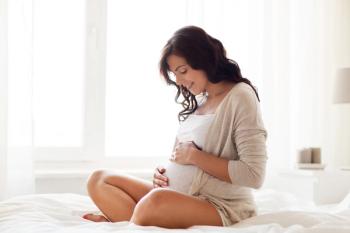
In Vitro Fertilization Increases Risk of Embolism
In vitro fertilization (IVF) is associated with an increased risk of venous thromboembolism and pulmonary embolism, especially during the first trimester.
In vitro fertilization (IVF) is associated with an increased risk of venous thromboembolism and pulmonary embolism, especially during the first trimester, according to the results of a population-based cross-sectional study of women who had given birth after IVF in Sweden.1
Venous thromboembolism is the leading cause of maternal mortality in the United States.2 In spontaneous pregnancies, the risk of venous thromboembolism is increased; the risk is even greater for pregnant women with a family history of thrombosis or thrombophilia. Reports of venous thromboembolism, most classically presenting as a deep vein thrombosis, occur more often in pregnancies resulting from IVF compared with naturally occurring pregnancies, but little is known about the risk of pulmonary embolism in women undergoing in vitro fertilization.
To better understand how IVF is associated with venous thromboembolism and, subsequently, pulmonary embolism, researchers from Sweden compared the risk of these vascular events in 23,498 women who gave birth after IVF between 1990 and 2008 and 116,960 women with natural pregnancies matched for maternal age and calendar year of delivery to the women in the IVF group.
The incidence of venous thromboembolism was 4.2 per 1000 women who underwent IVF and 2.5 per 1000 women who had a naturally occurring pregnancy. Throughout the pregnancy, the risk of venous thromboembolism was higher after IVF (hazard ratio, 1.8; P<0.001). In the first trimester, however, the risk of venous thromboembolism was particularly high in the IVF group (hazard ratio, 4.0).
There were far fewer total cases of pulmonary embolism reported, but the available data showed that the risk of pulmonary embolism also was elevated after IVF (hazard ratio, 1.4; P<0.0034) and in the first trimester in particular (hazard ratio, 7.0). Adjustment for multiple factors, such as parity, smoking, education, maternal age, country of birth, calendar year, and marital status, had no overall affect on the study findings. Compared with a singleton pregnancy, however, a multiple gestation pregnancy seemed to increase the risk of venous thromboembolism, reported the study authors.1
Although IVF is associated with an increased risk of venous thromboembolism and pulmonary embolism in particular, the absolute risk of both vascular events remains very low, even among women undergoing IVF.
Pertinent Points:
- Venous thromboembolism is the leading cause of maternal mortality in developed countries.
- The risk of venous thromboembolism and pulmonary embolism increased during the first trimester after in vitro fertilization.
References:
1. Henriksson P, Westerlund E, Wallen H, et al. Incidence of pulmonary and venous thromboembolism in pregnancies after in vitro fertilization: cross sectional study. BMJ. 2013;346:e8632. doi: 10.1136/bmj.e8632.
2. Chang J, Elam-Evans LD, Berg CJ, et al. Pregnancy-related mortality surveillance-United States, 1991â1999. MMWR Surveill Summ. 2003;52(2):1â8.
Newsletter
Get the latest clinical updates, case studies, and expert commentary in obstetric and gynecologic care. Sign up now to stay informed.











